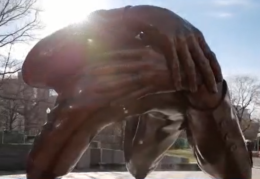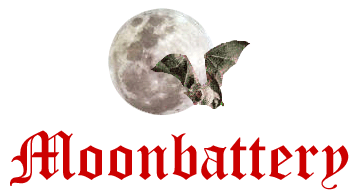Race Recap
1,551 words
On April 15, the day my bank check landed in the Treasury Department’s post office box to perhaps help fund the welfare state or assist in promoting multiracialism and transgenderism at home and abroad, I was running the 128th Boston Marathon — the oldest annual marathon in the world. To be selected to run Boston, one must run a designated qualifying time standard at an earlier marathon. This year the number of Boston qualifiers exceeded the limit, so the qualifier pool was cut dramatically by prioritizing those who ran the greatest time under the qualifying time standard. Among runners, obtaining a “BQ,” or Boston Qualifier, and then actually running Boston is considered a laudable accomplishment.
After running a race, runners with a literary bent sometimes circulate a “Race Recap,” which typically covers the full race day experience and focuses on the course profile, the weather, or a runner’s fueling strategy or pacing. This Race Recap will focus on other topics.
I exited my hotel on April 15 at 6 AM. I walked slowly to the Boston Common, a 40-acre public park previously owned by William Blaxton, a chaplain who arrived in Massachusetts from England in the 1620s. Blaxton sold his land to Massachusetts Bay Colony Governor John Winthrop and then left Boston in the 1630s, apparently after a feud with the Puritans. In 1768, the British Redcoats set up an encampment in the Common. The Granary Burying Ground is at its southern edge and is the burial location of Paul Revere, John Hancock, and Robert Paine. Statues in the Common include the Boston Massacre Memorial, the Soldiers and Sailors Monument, and an equestrian statue of George Washington. But as I made my way to the row of yellow school buses transporting runners to the “Athletes’ Village” in Hopkinton, where the starting line is located, the only statue I could see was “The Embrace.”
This statue, which purportedly depicts Martin Luther King hugging his spouse, is a modern, deconstructionist monstrosity. It must be seen to be believed. Indeed, if there were a small placard beside the statute announcing that it depicts two iguanas engaged in violent coitus, many viewers would feel their suspicions had been confirmed. One should walk over to the Ancient Greek or Roman statuary collection in the Boston Museum of Fine Art and look up at Juno, Male Torso, Athlete with Scraper, or Athena to get a truer sense of the degree to which we are living in a truly debased and degraded state.
Many of the elite runners — and indeed, the winners of this year’s race — are East Africans. The East Africans seem to have a genetic advantage that positively impacts marathon performance. Of course, if one were to conduct a superficial Internet search on this issue, one would see articles and published studies saying things such as: “a deterministic relationship between genetics and sports must be avoided, as it is both scientifically incorrect and prone to reinforcing population (racial) stereotyping.”[1] In any event, as I slid into my seat on the school bus and looked around, I only saw others like me: white men and women who were very fit, very polite, and generally very upbeat. We made conversation about running, about our jobs, and about Boston. The bus driver made a wrong turn in Hopkinton and we all assured her that we still had plenty of time until the start and that we appreciated the ride. This contrasted starkly with the last time I used public transportation in an urban area and engaged in my usual routine — i.e. quickly scanning the area, making no direct eye contact, keeping my hand close to whatever weapon I had, and trying to read while remaining situationally aware.

You can buy Greg Johnson’s It’s Okay to Be White here.
The athletes on the bus to Hopkinton and those I saw in the Athletes’ Village as well as the starting line were of a type: high performing, middle- and upper-middle-class whites who are both financially successful enough to have sufficient disposable income to run marathons around the country and disciplined enough to consistently train at a high level. Indeed, data shared by the running app Strava shows that most Boston qualifiers logged 53-mile training weeks.
While there is not much reliable data on the racial makeup of the Boston marathon field, given that this marathon selects for discipline, long-term planning, the ability to delay gratification, and financial success, it is no surprise that the Boston Marathon is under attack from within and from without to “diversify.” For instance, beginning in 2021 the Boston Athletic Association, the group that administers the Boston Marathon, began giving grants to “black and brown running groups” and now boasts that it is committed to fostering a more inclusive Boston Marathon and increasing the “percentage of athletes identifying as non-white.” The Boston Athletic Association is also defending against a discrimination suit by TrailblazHers, an “all female run crew” that “creates a space for women, especially BIPOC women.”
Egalitarianism, which is a central tenet of liberal democracy, necessarily worms its way into everything. Marathoning will not be spared. Indeed, beginning in at least 2018, when multinational media company Hearst purchased the most popular monthly running magazine, articles began appearing that decried the whiteness of running. Instead of reading articles about a runner’s training plan, we read about runners who “want to tackle distance running’s diversity problem.[2]” Just as we are now instructed to believe that the sistahs in the NASA typing pool were the ones who got us to the moon, runners are being told that a morbidly obese black woman named Mirna Valerio, who has appeared on the cover of running magazines and who walks running events, is someone to be admired. Similarly, we are being told that a morbidly obese black guy named Martinus Evans, is fighting racism in running when he waddles around with the activist running club “Black Men Run.” Evans, too, regularly appears on the cover of running magazines. His corpulent figure was recently featured beneath the headline “Meet the Man Making Running More Inclusive.” Of course, the beatific smile of Ahmaud Arbery continually pops up in running magazines alongside bromides such as “Running While Black.” Needless to say, the magazines in the Hearst portfolio said nary a word about Andy Probst, the white retired police officer deliberately run over by a couple of diverse teenagers.
As for the race itself, it was a struggle. Marathons always are. Spring marathons are oftentimes uniquely tough because the training occurs during the cold winter months and the body has not acclimatized to run in the heat. Most of my training was in the bitter cold and marathon day was close to 70 degrees Fahrenheit. I didn’t run my goal time, but it was a decent performance. In fact, I qualified for next year’s Boston Marathon. Why do people run marathons? I cannot speak for the likes of Mirna and Martinus or the TrailblazHers, but I run — and I suspect my brethren on the bus run — because we are, to some extent, chasing virtue. Ted Kaczynski characterized running as a “surrogate activity,” which he defined as “an activity directed toward an artificial goal that people set up for themselves merely in order to have some goal to work toward…or for the sake of the ‘fulfillment’ that they get from pursuing the goal.[3]” While there is some truth to his assessment, it is a pretty bleak view of things. My own view of it is informed, in part, by what Alasdair MacIntyre wrote in After Virtue:[4]
It is in the course of the quest and only through encountering and coping with the various particular harm, dangers, temptations, and distractions which provide any quest with its episodes and incidents that the goal of the quest is finally understood . . . The virtues therefore are to be understood as those dispositions which will not only sustain practices and enable us to achieve goods internal to practices, but which will also sustain us in the relevant kind of quest for the good, by enabling us to overcome the harms, dangers, temptations, and distractions which we encounter, and which will furnish us with increasing self-knowledge and increasing knowledge of the good.
At its worst, running is simply a low skill, self-indulgent hobby. But the discipline and temperance required to train at a high level while fulfilling obligations to family, community, and profession can carry over into all facets of one’s life. Even if, for instance, running 6:15 per mile for 26.2 miles is an “artificial goal,” sometimes it is important to know whether you can be disciplined enough — in the face of life’s other challenges — to put in the required training to run that pace. And even though running the marathon is not exactly slaying the dragon or charging the hill, self-knowledge is nevertheless conferred when your hip adductor or calf is strained at mile fifteen and, with eleven hilly miles to go, you keep moving forward.
Notes
[1] Zani ALS, Gouveia MH, Aquino MM, Quevedo R, Menezes RL, Rotimi C, Lwande GO, Ouma C, Mekonnen E, Fagundes NJR. Genetic differentiation in East African ethnicities and its relationship with endurance running success. PLoS One. 2022 May 19.
[2] Brian Metzler, “Joe Gray Wants to Tackle Running’s Diversity Problem — Diversity in Running” (Runner’s World).
[3] Theodore Kaczynski, Industrial Society and Its Future, p. 9.
[4] Alisdair MacIntyre, After Virtue, second ed., (University of Notre Dame Press, 1984), p. 219.



